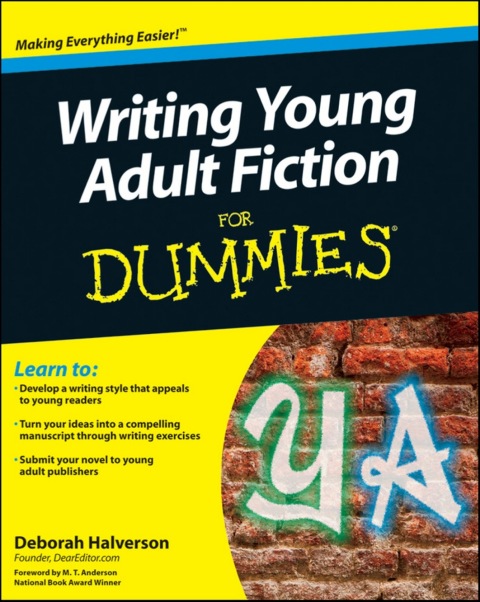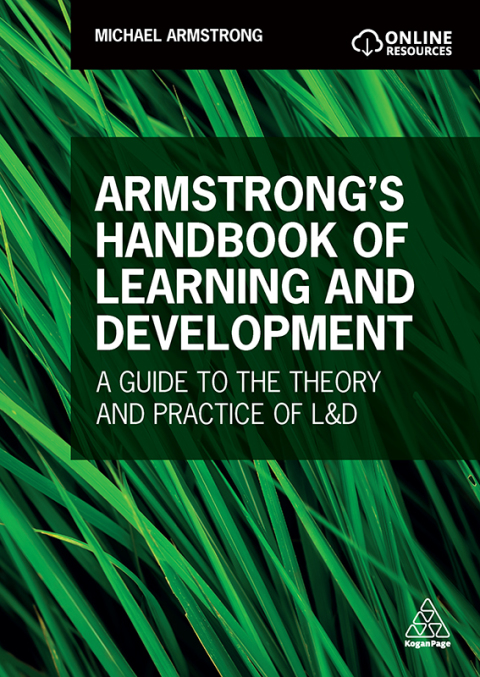Description
Efnisyfirlit
- Title Page
- Copyright Page
- Table of Contents
- Foreword
- Introduction
- About This Book
- Conventions Used in This Book
- What You’re Not to Read
- Foolish Assumptions
- How This Book Is Organized
- Part I: Getting Ready to Write Young Adult Fiction
- Part II: Writing Riveting Young Adult Fiction
- Part III: Editing, Revising, and Formatting Your Manuscript
- Part IV: Getting Published
- Part V: The Part of Tens
- Icons Used in This Book
- Where to Go from Here
- Part I: Getting Ready to Write Young Adult Fiction
- Chapter 1: The Lowdown on YA Fiction
- Introducing YA and Its Readers
- Knowing what makes a YA a YA
- Understanding why YA fi ction is for kids
- Looking at why it’s not just for kids
- Maneuvering through the Challenges
- Reaching reluctant readers
- Pacifying gatekeepers
- Enjoying the Perks of Writing for Young Adults
- Getting new waves of readers: Long live the renewable audience!
- Gaining a following: The young and the quenchless
- Breaking the rules
- Chapter 2: Targeting Teen Readers
- Identifying Your Teen or Tween Audience
- Choosing your age range
- Targeting gender
- Exercise: Name your category
- Knowing Your Genre
- Exploring genres of YA fi ction
- Writing cross-genre novels
- Thinking through the Theme
- Looking at universal teen themes
- Making timeless themes relevant today
- Exercise: Choose your theme
- Making or Chasing Trends
- Chapter 3: Managing Your Muse
- Setting Yourself Up to Write
- Carving out your writing space
- Protecting your writing time
- Setting Your Muse Loose
- Capturing ideas
- Getting the words to fl ow
- Bulldozing your way through writer’s block
- Outlining the Right Way (for You)
- Outlining the whole story
- Planning portions
- Tossing out the outline
- Doing Research, YA-Style
- Taking notes and keeping records
- Following general research guidelines
- Finding reliable online resources
- Doing field research to make the teen realm yours
- Putting the brakes on research
- Revealing what you know
- Finding Your People: The YA Community
- Joining a professional organization: What SCBWI should mean to you
- Attending writers’ conferences
- Keeping up with the biz: YA-specifi c journals
- Checking out the online community
- Joining a critique group
- Part II: Writing Riveting Young Adult Fiction
- Chapter 4: Writing the Almighty Hook
- Understanding the Importance of a Hook
- Calling your shot for others
- Calling your shot for yourself
- Writing a Great Hook in Four Easy Steps
- Step 1: Introduce your character
- Step 2: State your theme
- Step 3: Assert your core plot confl ict or goal
- Step 4: Add context
- Exercise: Write your hook
- Using Your Hook to Shape Your Story
- Chapter 5: Creating Teen-Friendly Characters
- Casting Characters Teens Care About
- Calling all heroes
- Selecting a jury of peers
- Offing the old people
- Bringing Your Characters to Life
- Revealing character through action
- Revealing character through dialogue
- Getting physical
- The beauty of flaws: Creating a not-so-perfect character
- Backstory: Knowing the secret past
- Exercise: Create a full character profi le
- Putting Your Characters to Work
- Making the introductions
- Using character arc to drive your plot
- Granting independence to teen characters
- Writing Believable Baddies
- Giving the villains goals and dreams
- Seeing the good in the bad
- Making an example of an antagonist
- Exercise: Write a character profi le for your antagonist
- Chapter 6: Building the Perfect Plot
- Choosing the Approach to Your Plot
- Acting on events: Plot-driven stories
- Focusing on feelings: Character-driven stories
- Seven Steps to the Perfect Plot
- Step 1: Engage your ESP
- Step 2: Compute the problem
- Step 3: Flip the switch
- Step 4: Dog pile on the protagonist
- Step 5: Epiphany!
- Step 6: Final push
- Step 7: Triumph
- Exercise: Plot your trigger points
- Tackling Pacing and Tension
- Picking up the pace
- Slowing the pace
- Creating tension
- Managing Your Subplots
- Pulling Off Prologues, Flashbacks, and Epilogues
- Prologues
- Flashbacks
- Epilogues
- Chapter 7: Creating Teen-Driven Action
- Grabbing Teens’ Attention
- Opening with action
- Tell ’em how it is: Giving key info
- Making promises
- Pushing Readers’ Buttons with Scenes and Chapters
- Knowing a scene from a chapter
- Mastering transitions
- Leaving Teens Satisfi ed
- Empowering your teen lead
- Keeping it real
- Keeping your promise
- Delivering a twist
- Chapter 8: Setting Is More than Somewhere to Be
- How the Where and When Affect the Who, What, and Why
- Place
- Time
- Social context
- Setting Up Your Characters
- Manipulating their minds
- Putting words in their mouths
- Kicking characters in the pants
- Tying Your Plot to Your Place
- Choosing the Best Setting for Your Teen Novel
- Making the Setting Come Alive
- Engaging the fi ve senses
- Sample scene: Two girls on a bus
- Researching your setting
- Weaving the Setting into Your Narrative
- Sprinkling versus splashing
- Stacking the sensory details
- Keeping it young
- Giving the setting a job
- Freshening up common settings
- Chapter 9: Crafting a Narrative Voice Teens Will Listen To . . . and Love
- I’m Not Talking Dialogue Here: The True Meaning of Narrative Voice
- Getting a feel for narrative voice
- Seeing what goes into narrative voice
- Pinning Down Your Narrator and Point of View
- First-person POV
- Second-person POV
- Third-person limited POV
- Third-person omniscient POV
- The unreliable narrator
- Exercise: Developing your narrative POV
- Making Sense of Teen Sensibility
- Self-awareness and the teen psyche
- Embrace your inner drama queen
- Word Choice: It Pays to Be Picky
- Say what? Using appropriate words for your audience
- Getting fresh with your phraseology
- Exercise: Creating a word bank
- Showing a little style
- Syncing Your Delivery to Your Audience
- Sizing up sentence structure and paragraphing
- Putting punctuation in its place
- Show It, Don’t Tell It
- Chapter 10: Talking Like a Teen
- Telling Your Story through Dialogue
- Character and mood: Letting your teens talk about themselves
- Delivering information: Loose lips reveal plot and backstory
- Choosing the setting: Their “where” determines their words
- Even Old People Can Sound Young
- Rediscovering your immaturity
- Relaxing the grammar
- Ditching the fake teen accent
- Cussing with caution
- What the Best Dialogue Doesn’t Say
- Censoring the babble
- Dodging the question
- Avoiding info dumps
- Getting the Balance Right: Dialogue and Narrative
- Taking breathers with beats
- Making the action count
- He said, she said: Doling out dialogue tags
- Welcoming teens with white space
- Weighing your balance of dialogue and narrative
- Doing a Little Mind Reading: Direct Thoughts
- Part III: Editing, Revising, and Formatting Your Manuscript
- Chapter 11: Editing and Revising with Confidence
- Self-Editing, Where Every Revision Begins
- The read-through: Shifting your mindset from writing to editing
- Self-editing checklist
- Calling in the Posse: The Give and Take of Critiquing
- Participating in a critique group
- Hiring a freelance editor
- Getting input from teens and tweens
- Revising with Confi dence
- Starting big and fi nishing small
- Taking chances with your changes
- Knowing the fi nal draft when you see it
- Chapter 12: The Finishing Touches: Formatting and Finalizing
- Paying Attention to Nitty-Gritty Details
- Patrolling punctuation
- Avoiding basic blunders with easily confused words
- Running spell-check
- Making Passes: Professionals Proofread (Twice)
- Formatting the Standard YA Manuscript
- Page setup and such: Tackling the technical stuff
- Putting the right stuff on the fi rst page
- Protecting What’s Yours and Getting Permission
- Copyrighting your manuscript
- Understanding plagiarism, permission, and perfectly fair use
- Asking for the okay
- Crediting your sources
- Part IV: Getting Published
- Chapter 13: Strategizing and Packaging Your Submissions
- Creating Your Submission Strategy
- Compiling your submission list
- Identifying the right editor for you
- Deciding to work with an agent
- Query Letters, Your Number-One Selling Tool
- Why queries feel like the be all, end all . . . and are
- Writing a successful query letter
- Writing an Effective Synopsis
- Drafting the synopsis
- Tweaking the tone and tense
- Formatting a synopsis
- Packaging Your Submission
- What to include
- What not to include
- The skinny on sample chapters
- Keeping Your Fingers Crossed
- Enduring the wait for a response
- Receiving the long-awaited news
- Turning “No” into “Yes!”
- Using rejection to strengthen your story (and maybe resubmit it!)
- Reading between the rejection-letter lines
- Keeping your ego (and feelings) out of it
- Chapter 14: Self-Publishing: Is It for You?
- What’s So Different about Self-Publishing?
- Eyeing the benefi ts
- Realizing the drawbacks
- Understanding Your Publishing Options
- Traditional publishing
- Print-on-demand (POD)
- Digital publishing
- Knowing the Players
- Author services companies
- Publisher services companies
- Distributors
- Wholesalers
- Booksellers
- Weighing Self-Publishing for Your YA Fiction
- Common scenarios for self-publishers
- Balancing your goals, your guts, and your wallet
- Chapter 15: Mastering Marketing
- Laying the Foundation
- Working with a Marketing Team
- Understanding the marketing department’s role
- Calling in reinforcements: Freelance publicists
- Marketing Yourself: I Write; Therefore, I Promote
- Creating and maintaining a platform
- Gathering your marketing materials
- Garnering book reviews
- Part V: The Part of Tens
- Chapter 16: Ten Common Pitfalls in Writing YA Fiction
- Dating a Book
- Slinging Slang
- S-E-X
- Writing Cliché Characters and Situations
- Preaching
- Dumbing It Down
- Writing for 18+
- Putting Adults at the Helm
- The Waving Author
- Writing to Trends
- Chapter 17: Ten Facts about Book Contracts
- Does the Publisher Own the Copyright to My Book?
- What Does “Buy All Rights” Mean?
- What are Subsidiary Rights?
- What’s the Deal with Electronic Rights?
- What Does “Advance Against Royalties” Mean?
- What’s the Difference between Royalties on “Net” and “Gross”?
- Why Do My Royalties Go to My Agent?
- What’s a Boilerplate?
- Am I Protected from Libel Suits?
- What’s an Option, and Why Would I Grant It?
- Chapter 18: Ten Ways to Make the Most of a Conference
- Set Reasonable Goals and Make a Plan to Achieve Them
- Research the Faculty
- Pay for One-on-One Critiques
- Perfect Your Pitch
- Prepare Your Manuscript
- Create a Conference Notebook
- Bring Bookmarks or Business Cards
- Make Notes on the Business Cards You Receive
- Save Conference Expense Receipts for Tax Records
- Set Aside a Post-Conference Recovery Phase
- Index
- EULA






Reviews
There are no reviews yet.